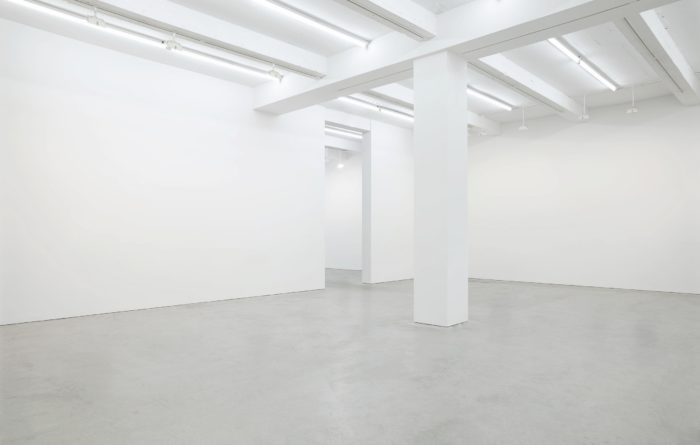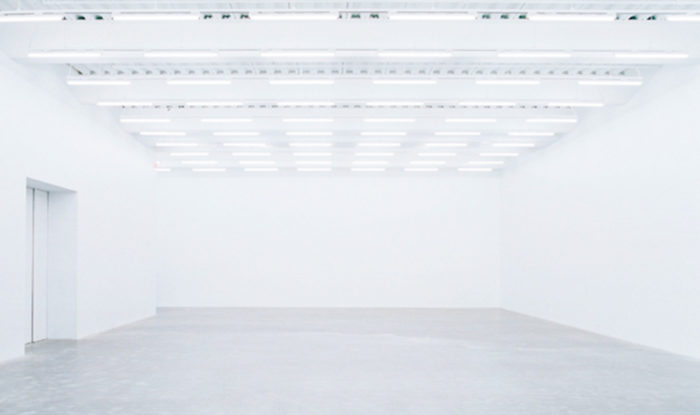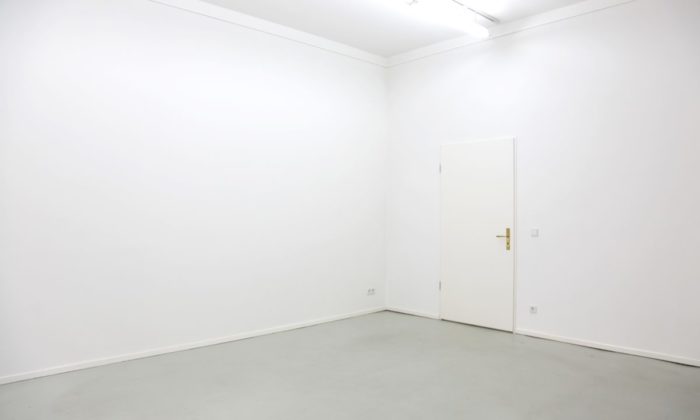Adult Contemporary: When Genre Exceeds Form
Beyond its non-medium-specific material condition, contemporary art endures as a kind of audience filtration system
This essay is featured in the book Coming Soon (NERO, 2018)
At what point during the previous century did all artistic production coalesce into a uniform mode—one that is, despite variations in size, medium, language, point of origin, style, content, scale, or material—principally, and in fact exclusively, indexed by the “contemporary” moment of late capitalism? Despite isolated and intermittent challenges as to whether a particular painting or sculpture, found object or readymade, ephemeral gesture or digital sketch, spontaneous social performance (or only its rumor) even belongs to the category of art at all—a question inflected by the aesthetic ambivalence historically indebted to Marcel Duchamp—anything that eventually qualifies as such is thereafter always-already a work of contemporary art.
Thus the patronizing and easily parodied story of the unwitting cleaner who disposes a certain portion of the faux-grimy rubbish-assemblage at the end of a late-night custodial shift in the regional Kunsthalle, to the absolute horror of the exhibitions manager and the delight of the indie cinema audience. Even this minor parable mirrors the structure of the information society today and its premium on insider knowledge—the ability to instantly recognize or properly attend to those categories that arbitrarily hold value (here, the scatter-art installation). By comparison, during the modern period abstract expressionism was dismissed as painterly deskilling, a sloppy practice that might well be proficiently aped by any man, child, or other marsupial. (I could do that.) The time span between each banal punch line marks the difference between contemporary art’s rapid consolidation as a diffuse yet distinct genre, and its prior form as a clear conceptual gesture or physical manifestation of some artistic action, sometimes even made by hand (i.e. the singular artwork). Beyond its non-medium-specific material condition, then, contemporary art endures as a kind of audience filtration system—even after correcting for class privilege—distinguishing those who, for various reasons, support its cultural significance; from those who view it as a potentially robust asset class; from those who just don’t “get it.”
The latter aversion to contemporary art, often ascribed to its general obscurity or illegibility without much consideration for the closely networked world of its social production, or historical particularity, likely has more to do with its absurd capital valuation—its twenty-first century arrival as full-blown cultural industry. Disseminating globally through biennials, fairs, and ever “new markets”—across time zones that more or less trace the advancing global economic participation of BRIC (Brazil, India, Russia, China) and MINT (Mexico, Indonesia, Nigeria, Turkey) countries, and regions with significant state support for culture as a development strategy (Singapore, Qatar)—the ongoing appeal of contemporary art paradoxically seems to be, much like film noir or sci-fi, its unmistakable genre familiarity regardless of any formal heterogeneity: This is so contemporary. Even in “exotic” or merely incongruous locations, the contextual deracination of the white cube—or, alternatively, recuperated postindustrial factory complex—proffers a conventional and by-now soothing aesthetic via highbrow experiential continuity: culture in an easily digestible form. The persistence of institutions and (mostly social-democratic) government initiatives in mobilizing the popular mood for contemporary art—from the top, down—has gone some way in converting the skeptical faction of its hypothetical audience to at least view public manifestations and major museum exhibitions as elevated forms of entertainment, if not merely casual social-media opportunities, touristic events, or crucial (however airless) settings for heterosexual courtship. As Suhail Malik suggests, contemporary art “proceeds by a kind of … resource extraction appropriate to the formation of a comprehensively global culture in which no place and no time are fundamentally strange to any other. It is an operative proto-universalism.” Taken together, this ideological synchronicity of all places and all times produces a “now” that is fundamentally opposed to Benjaminian Jetztzeit, precisely because it is predictable, and already subordinated to the regime of further accumulation.

What does it mean to live and work under the glaring constraints of this particular period of time—whose interminable contemporaneity promises no future that has not already been bought and sold—from a chronological as well as a practical point of view? Can “art” as such be recovered from its moment? Malik’s technically thorough-going analysis of contemporary art links its recent metastasization to three key historical developments within the last fifty years: 1) the power shift from Paris to New York in Western art in the postwar era, at the height of US dominance; 2) the shift from the Cold War era to the “state-market nexus of globalization” through the 1990s; 3) the reorganization and dissolution of states in East Asia and Eastern Europe after the fall of the Soviet Bloc. And while he stresses contemporary art’s friendly parity with the broader neoliberal restructuring of the global economy, neither does he imply an exact uniformity.
Almost two decades ago, these transformations were observed much closer to the center of the nascent global art scene, when the renovated Tate Modern Turbine Hall had first opened in London:
“One reason the so-called young British artists have died a death over the past year or two is that Tate Modern is so official, so much an arm of the state … The oppositional element to cutting-edge art was partly pitched against the cultural conservatism of [Margaret] Thatcher and [John] Major, but also partly against the stuffiness of the art institutions themselves … That art no longer has anything to turn against.”
Remarkably, youth—in terms of the still living, now mature YBAs—then maintained a romantic cast of rebellion. But it is difficult to identify any grief for actually existing punk (the attitude, not the style) among the young artists active today, who more or less entered the scene after art had achieved its contemporaneity, and so were readily interpellated by its institutional machinery. Distinguished by generic census data—the accident of birth year—rather than by virtue of a situation, collective output, formal coherency, or idea, the so-called “89plus” cohort of millennial art-ists also conveniently calibrate the age of contemporary art, too. Prepackaged as relevant “young” artists gifted with extreme technological literacy (a kind of proto-Big Data profiling), the danger of aging into obsolescence—a hazard for any sort of hardware—remains some five years later. On this point, Seth Price once wrote: “Why is it that some styles pass directly into legend, while others remain trapped in an awkward limbo?” (although he was referencing the “voracious synthetic mode” and heavy studio production of certain pop music trends in the late 1990s). In a new economy that increasingly relies on self-discipline and self-production as a precarious mode of social reproduction, it is difficult to avoid becoming trapped in such a “rigid format-ted groove” through naïve or nonreflexive overidentification with the system. The pressure to differentiate both self and art beyond strictly predetermined lines is not without consequence, either, forcing the perverse ahistorical now-time of global digital connectivity/accessibility into a Pandora’s box-like bogeyman: “Choice in such an expanded field is both effortful and anxiety inducing. Why not instead let a genius algorithm or recommendation engine efficiently narrow down what to play and whom to date?” Or, for that matter: what to do, and what to make? Here the consolation of contemporary art returns in a colorfully coated aluminum surface, UV-printed and die-cut honeycomb panel, readymade chandelier sculpture, or once again, the scatter-art installation: things that might already be considered “art.”
How could a singular act of dissent, or even consistent trolling, finally draw the curtain on the contemporary? If generated from an entirely different idiom—a true “outside”—would the gesture simply pass, unnoticed? Even Malik concludes his pessimistic report in a wildly utopian key: “to cast [contemporary art] and its presently prevailing global ubiquity in a future past, into a history, it is necessary that art must exit contemporary art.” The only viable solution, then, is for art to turn against itself.

It was Walter Pater’s nineteenth-century encounter with the School of Giorgione that led him to consider music the ne plus ultra art form, despite the “peculiar and untranslatable sensuous charm” of both painting and poetry also. Writing after the era of rock music, however, the late Mario Perniola discredited the implied humanism—and thus artistic character—of sound:
“Beside the neutral excitement of drugs, sci-fi futurism, and the radical exteriority of the look, rock music constitutes another fundamental aspect of impersonal feeling in our time.… it is necessary to free oneself of the sentimental conception of music, which considers it as the expression of an emotional interiority, and from the vitalistic one which sees in it the animal cry, the spontaneous manifestation of natural existence.”
This latter-day perspective hews closely to the experience of digitally diffuse culture in the present moment, while Pater’s analogy suggests a belated case study in genre—contemporary art qua contemporary music—here specifically borrowed from the US Billboard charts.
Since 1936, Billboard magazine has published a weekly list of popular singles or albums in the United States and other markets. Although now incorporating data from digital platforms (YouTube, Spotify) in its listings, the charts were originally based on distinctive airplay-only radio formats that categorized music by genre (as well as controlling for announcer style, hour of programming, commercial material, etc.) in order to deliver a particular demographic to advertisers: “music programming is the ‘means to the production of radio’s real commodity—the audience—to be sold to advertisers in exchange for revenue to the broadcasters.’”
In a long essay in American Music, Keir Keightley describes the transformation of radio formats after the overwhelming teen fans of Rock alienated audiences in different age brackets, effectively ending the “easy listening” chart and the era of the “one-size-fits-all” broadcast:
“[It] is worth charting the history of Billboard’s various attempts to name adult-oriented music. While we do so, please bear in mind that the Billboard adult chart with the longest-lasting name, the one that “stuck” so to speak and effectively ended the search for a name, was the only one to finally and explicitly identify the market: “Adult Contemporary,” a chart that has run from 1979 to the present day.”
The “Adult Contemporary” (AC) genre consists of “soft” rock and predominantly vocal music that combines elements of Contemporary Country, Smooth Soul, and Smooth Jazz. Its target audience is between 25 and 54 years old, with a distribution of mostly women. Although later differentiating still further—into Lite Adult Contemporary, Soft Adult Contemporary, Adult R&B, Urban Adult Contemporary—a subjectively chosen example of the genre, here, would be Toni Braxton’s second single, “Un-Break My Heart” from the album Secrets (1996). In the accompanying music video, she croons: Don’t leave me in all this pain / Don’t leave me out in the rain to the comatose body of Tyson Beckford, the presumed casualty of a head-on motorcycle collision somewhere along Highway 101, likely in Malibu. Although “Un-Break My Heart” debuted on the R&B chart, in the decades since its release the single has migrated into the smooth and resilient AC category. Even despite the angst in Braxton’s deep alto riffs, her behind-the-beat phrasing is still more soothing than it is invigorating.

Paul Allen Anderson describes the more recent “popularity of user-interface music streaming” as both exemplary of “the historically specific tonal and affective worlds within which web-dependent cognitive laborers and others presently live” and the often unacknowledged legacy radio formats that playlist-oriented sites rely on as much as—if not more than—algorithms and user data analysis. Through critically examining the diffusion of digital music (loosed from the LP and other physical containers) in workplaces and “aggressively stage-managed destination stores” for targeted psychological mood enhancement, he observes: “For many adults, deliberate musical listening is mostly nostalgic listening … [which] reinforces positive and ego-fulfilling thoughts.”
While there are many differences between the current, per-haps even unbearable, condition of contemporary art as a pervasive, Muzak-like genre and the more obviously market-driven differentiated audience of contemporary music, there is nevertheless a certain relief in the lack of edginess and straightforward maturation offered by the “Adult Contemporary” format. Consider, for example, contemporary art’s cyclical repetition of aesthetic styles and historically familiar formats as somehow akin to “nostalgic listening.” Or its unmistakable “impersonal feeling,” general lack of vigor, aversion to the idea of pain, and after-the-fact tempo—that is, its cool distance from the very issues that define our era. Is it, finally, possible to imagine that contemporary art may have aged out of its own (universalized) temporality?
Instead of agonizing over an improbable exit strategy, then, perhaps we need only expropriate the (little) time left behind, from within the contemporary itself: to recuperate a more radical, less functionary form of art that means something beyond its now-ness or temporal currency—and for decidedly less “adult” purposes.
How high is your rent?
If art is the highest
and most honest form
of communication of
our times and the young artist is no longer able to move here to speak
to her time … Yes, I could,
but that was fifteen years ago
—Eileen Myles




